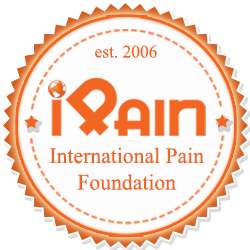We are advocating for Better Chronic Pain Management Policies because chronic pain is common in the United States. Nearly one out of every 5 adults will experience it at some level. For some, it lasts days or weeks. For others, it could last months, years, or a lifetime. Studies have shown that people suffering from chronic pain are much more susceptible to anxiety, depression, insomnia, and fatigue. It can be caused by any number of things, like arthritis, bone and joint injuries, immune disorders, and fibromyalgia, to name a few. Current chronic pain management treatments have some flaws, so it is essential to advocate for changes.
Current Chronic Pain Management Policies
Generally, in today’s healthcare industry, there are two approaches to managing chronic pain in patients: non-opioid and opioid pain medications. Some healthcare providers also will use physical therapy types of pain to manage it and maintain the range of motion in limbs.
Many people find themselves turning to opioids in the hopes that the medication will be strong enough to fight the pain on a long-term basis. The problem is these medications are highly addictive. This can lead to misuse, addiction, and overdose. Additionally, if a child or even an at-risk adult were to find the opioid medications, it could be very dangerous or deadly to them.
Changes to the use of non-opioid medications to reduce the need for addictive opioids and advocating for other pain management policies could positively affect the industry. Other changes would include a program to safely relinquish and destroy any extra opioids and a program to help teach and maintain their proper use.
But how can one advocate for these changes?
How Flags and Banners Can Be Tools for Advocacy Groups
Advocacy groups find it increasingly helpful to hold events, bring in guest speakers, hold rallies, and get attention to the need for change. Flags and banners play a significant role in this. Imagine you are a passerby and see some people gathered around, but nothing says why; you will likely keep walking. Imagine you are a passerby, and you see an event taking place. Big signs, colorful bunting, and other banners indicate this is an event to call for reform in the chronic pain industry. This is much more likely to get your attention. In addition, it is much more likely to draw in supporters.
In addition, hosting events and using signs, banners, buntings, and colors draw the eye. Suppose your advocacy group is working to get the attention of lawmakers, the medical industry, and anyone who can reform chronic pain management policies and drive. In that case, you need to catch their eye.
Importance of Visual Symbolism to Promote Awareness and Change
Many think of a business when someone says, “Build your brand.” However, creating a solid, clear, memorable image is as simple as it needs to be. Moreover, that includes advocacy; building a brand through signage, logos, and slogans is vital for any advocacy group to promote change.
Most people will not remember handouts, long speeches, or just about anything with many words on it. They will remember visual symbolism: a logo that stands for an advocacy group, or even a visual representation of someone experiencing chronic pain. People are visual. Images will imprint in their memory, and they are much more likely to immediately think of the group when they see those symbols again. Promoting awareness and change is not a one-time event. It is ongoing, and it is far-reaching. Creating one cohesive image through visuals is vital.
In Summary
Chronic pain is one of the most common reasons people see doctors in today’s world. Nevertheless, there is a severe lack of proper management of this pain, leading to addictions in those with the genetic marker for addiction, and misuse of medications, severe depression, and more. For an advocacy group to truly work toward change in this division of the medical industry, signage, and visuals can go a very long way.
By Brittany Cotton
Published by International Pain Foundation, iPain Blog, Team iPain

